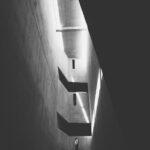The magnificent and imposing Berliner Dom or Berlin Cathedral is without doubt one of the most photographed buildings in Berlin. No wonder, because with its striking domes and monumental 114 metres long and 116 metres high, the cathedral stands out in the landscape. Berlin Cathedral is located on the banks of the River Spree on Museum Island.
The Berliner Dom, Berlin’s largest and most important Protestant church, was built between 1894 and 1905, but its history begins much earlier.
History
The history of Berlin Cathedral begins in 1465, when the Chapel of St. Erasmus, which was part of the newly built Royal Palace of Cölln, was elevated to the status of a collegiate church or “Domkirche”, the term used for this type of church at the time.
In 1535, Elector Joachim II remodelled the Dominican church building on the south side of the palace into the court church, thus moving the Domkirche to this address. With the conversion of Joachim II to Protestantism, the previously Catholic church was transformed into a Protestant-Lutheran church.
As the church building had already fallen into disrepair, Friedrich II ordered the construction of a new building in 1747. Based on Johann Boumann’s architectural design, a new Baroque cathedral was built between 1747 and 1750 on the site of the present Berliner Dom.
Some 70 years later, to celebrate the union of the Lutheran communities in Prussia, the cathedral was remodelled inside and out in neoclassical style by the architect Karl Friedrich Schinkel.
Years later, the royal family felt that the cathedral was too modest and did not represent the monarchy well. On the orders of King Friedrich Wilhelm IV, it was decided to build a more imposing cathedral.
The old cathedral was therefore demolished and construction of the present Berliner Dom began in 1895, finally being opened on 27 February 1905. Designed by Julius Raschdorff in a baroque style with influences from the Italian Renaissance, the cathedral, with its monumental dimensions of 114 metres long, 73 metres wide and 116 metres high, came to be compared to St. Peter’s Basilica in the Vatican and regarded as a Protestant counterweight.
During the Second World War, the cathedral dome was hit by a flammable liquid bomb during an air raid. Due to the difficulty of access, the fire could not be contained and the entire dome was destroyed. Parts of the burning dome collapsed, spreading the fire throughout the cathedral.
In 1953, a temporary roof was built to cover the cathedral and protect what remained of its interior. The cathedral remained in East Berlin after the division of the city, and reconstruction by the East German government began only in 1975, with financial support from the Protestant Church and West Germany.
During the reconstruction work, the original design of the cathedral was modified somewhat, as the memorial hall in the north wing was demolished and the dome simplified. The reconstruction of the façade was completed in 1983 and the following year work began on the interior. The cathedral was solemnly reopened on 6 June 1993.
Video
Composition of Berlin Cathedral
The cathedral consists of three buildings on the Museum Island: the main church, the baptismal chapel and the memorial, in which the Hohenzollern family crypt is located. The latter is the most visited part and attracts the most tourists. The tombs of Prince Friedrich Wilhelm and his second wife Dorothea and the tomb of Kaiser Friedrich III are also very popular. On the south side are the tombs of Sophie Charlotte and King Friedrich I.
The Berliner Dom can be visited and is definitely worth a visit, as the cathedral is also majestic and beautiful inside, being richly decorated with reliefs illustrating stories from the New Testament and important figures of the Protestant Reformation.
Inside is the largest pipe organ in Germany, with over 7,200 pipes, quite simply a work of art built by Wilhelm Sauer.
The cathedral dome is also accessible and visitors who climb the 270 steps will be rewarded with a breathtaking view from up there.
The main entrance to Berlin Cathedral opens onto the Lustgarten, a tree-lined square with a fountain in the middle, surrounded by a lawn where people like to relax on sunny days. Events are often held here.
On the other side of the river Spree it is also very nice. There are several restaurants and cafés, where you can sit down, have a bite to eat and rest from your sightseeing while enjoying the beautiful view of the Berliner Dom.
How to get to the Cathedral
The cathedral is open to visitors from Monday to Saturday from 09:00 to 19:00 and on Sundays and public holidays from 12:00 to 19:00. However, if there is a mass, visits are not allowed, only to attend the mass, of course.
Price: €7 for adults and €4 for students
Address: Lustgarten 1 – Mitte, 10178 Berlin
S-Bahn: Lines S5, S7 and S75, station Hackescher Markt.
Bus: Lines 100 and 200, stop Lustgarten; Line TXL, stop Spandauer Str./Marienkirche
Tram: Lines M4, M5, M6, stop Spandauer Str./Marienkirche; Line M1, stop S Hackescher Markt
https://goo.gl/maps/o3KqjsLki3ZDd3AN9





